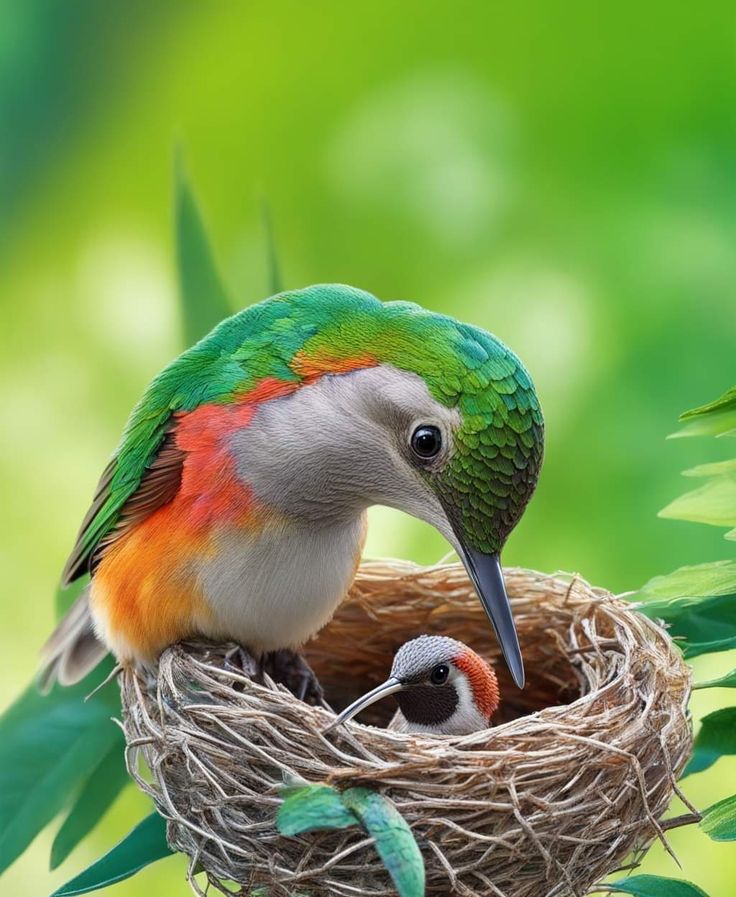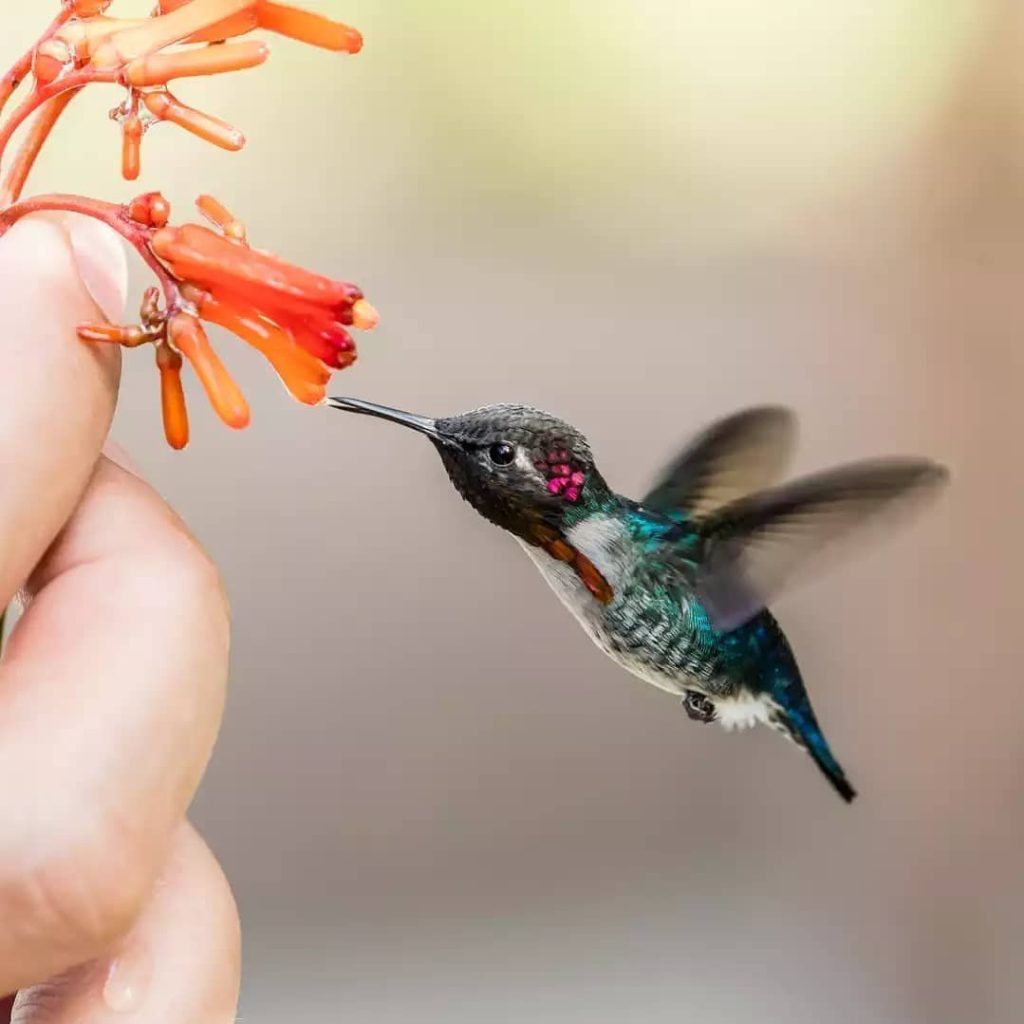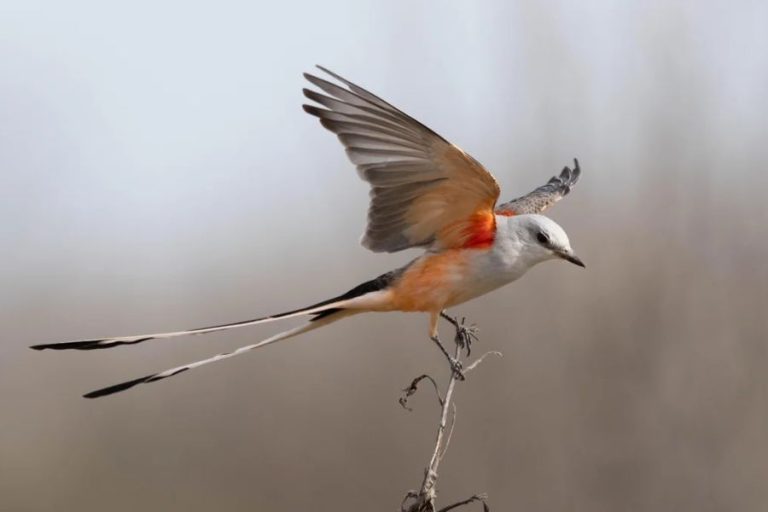A Winged Jewel No Bigger Than a Bee: The Bee Hummingbird
In a sunlit Cuban garden, the air seems alive with sparks of color. A tiny blur of wings hovers near a hibiscus bloom, its body no longer than a human thumb, its heartbeat racing at 1,200 beats per minute. With a sudden dip, it sips nectar, then vanishes in a flash of iridescent light. This is the Bee Hummingbird (Mellisuga helenae), the smallest bird in the world and one of nature’s most astonishing creations.

A Bird in Miniature
The male Bee Hummingbird is barely 6 centimeters long and weighs less than 2 grams—lighter than a single coin. Yet within his tiny frame glitters a rainbow of beauty: shimmering turquoise back feathers, a fiery iridescent red gorget on the throat, and wings that beat up to 80 times per second. The female, slightly larger, wears softer blues and greens without the crimson throat, her subtler plumage blending with the flowers she visits. Despite their size, both radiate a brilliance that rivals birds many times their scale.
Bee Hummingbirds are found only in Cuba and the Isla de la Juventud, where they inhabit forests, gardens, and coastal scrub. They are nectar specialists, hovering before blossoms to sip their sugary fuel with long, slender bills. As they feed, they pollinate countless plants, playing a vital role in the ecosystem. Their flight is acrobatic—capable of hovering in mid-air, flying backward, and darting side to side with lightning speed. Their wings hum audibly, creating the soft buzz that gives them their name.

Masters of the Air
The Rhythm of Life
Courtship among Bee Hummingbirds is as dazzling as their plumage. The male ascends high into the sky before diving sharply past the female in a display of speed and precision. He flashes his ruby-red throat feathers in the sunlight, a signal of both beauty and stamina. Females build tiny cup nests from plant fibers and spider silk, no larger than a coin, where they lay two eggs the size of peas. The chicks hatch blind and helpless, yet within weeks are ready to take to the air, following in their parents’ blurred wingbeats.

Small Bird, Great Symbol
Though physically minute, the Bee Hummingbird holds a mighty symbolic presence. To many Cubans, it represents resilience, joy, and the spirit of the island itself. Its brilliance has inspired poets and artists who see in its wings the fleeting magic of life. Tourists and birdwatchers travel from around the globe hoping to catch even a glimpse of this living jewel.
Fragile Wonder
Despite its fame, the Bee Hummingbird is listed as Near Threatened. Habitat loss from deforestation and agriculture has reduced the flowers and nesting sites it depends on. Climate change also threatens to alter the delicate balance of ecosystems in which it thrives. Conservation in Cuba now focuses on protecting flowering habitats and raising awareness of this tiny but vital species.

A Closing Reflection
To see a Bee Hummingbird is to marvel at life’s capacity for wonder in the smallest of forms. It reminds us that greatness is not measured in size, but in brilliance, purpose, and the joy it brings. In its whir of wings and flash of colors, the world’s tiniest bird whispers a powerful truth: that even the smallest lives can leave the biggest impact.






